Legend of Grimrock 2 4K screenshot gallery

Pixel Boost is our weekly series devoted to the artistry of games, and the techniques required to run them at high resolutions.
What if a dungeon crawler was not, in fact, limited to the dank, dark underground? Grimrock 2 answers that question beautifully—in that it's utterly beautiful—as it marries a decades-old genre with the ability to explore the surface of the mysterious Isle of Nex.
Grimrock 2's environs range from fresh forests to sunny beaches to, yes, of course, moody dungeons. And they're all beautiful, and often austere, in a way that smartly blends the early days of dungeon crawlers with modern technology.
As always with Pixel Boost, we had to crank Grimrock to the limit. That called for downsampling. To do so, we enabled Nvidia's Dynamic Super Resolution in the Nvidia Control Panel, then ran Grimrock at 3840x2160 pixels. It ran just fine, although the UI unfortunately doesn't scale with resolution. That gave us a pretty tiny HUD, but made Nox all the prettier.
One tip: while the game would run at 5K (5120x2880), it had a tendency to crash when we snapped our screenshots with FRAPS. 4K performed flawlessly. Downsample away!

Pixel Boost is our weekly series devoted to the artistry of games, and the techniques required to run them at high resolutions.
What if a dungeon crawler was not, in fact, limited to the dank, dark underground? Grimrock 2 answers that question beautifully—in that it's utterly beautiful—as it marries a decades-old genre with the ability to explore the surface of the mysterious Isle of Nex.
Grimrock 2's environs range from fresh forests to sunny beaches to, yes, of course, moody dungeons. And they're all beautiful, and often austere, in a way that smartly blends the early days of dungeon crawlers with modern technology.
As always with Pixel Boost, we had to crank Grimrock to the limit. That called for downsampling. To do so, we enabled Nvidia's Dynamic Super Resolution in the Nvidia Control Panel, then ran Grimrock at 3840x2160 pixels. It ran just fine, although the UI unfortunately doesn't scale with resolution. That gave us a pretty tiny HUD, but made Nox all the prettier.
One tip: while the game would run at 5K (5120x2880), it had a tendency to crash when we snapped our screenshots with FRAPS. 4K performed flawlessly. Downsample away!

Pixel Boost is our weekly series devoted to the artistry of games, and the techniques required to run them at high resolutions.
What if a dungeon crawler was not, in fact, limited to the dank, dark underground? Grimrock 2 answers that question beautifully—in that it's utterly beautiful—as it marries a decades-old genre with the ability to explore the surface of the mysterious Isle of Nex.
Grimrock 2's environs range from fresh forests to sunny beaches to, yes, of course, moody dungeons. And they're all beautiful, and often austere, in a way that smartly blends the early days of dungeon crawlers with modern technology.
As always with Pixel Boost, we had to crank Grimrock to the limit. That called for downsampling. To do so, we enabled Nvidia's Dynamic Super Resolution in the Nvidia Control Panel, then ran Grimrock at 3840x2160 pixels. It ran just fine, although the UI unfortunately doesn't scale with resolution. That gave us a pretty tiny HUD, but made Nox all the prettier.
One tip: while the game would run at 5K (5120x2880), it had a tendency to crash when we snapped our screenshots with FRAPS. 4K performed flawlessly. Downsample away!

Pixel Boost is our weekly series devoted to the artistry of games, and the techniques required to run them at high resolutions.
What if a dungeon crawler was not, in fact, limited to the dank, dark underground? Grimrock 2 answers that question beautifully—in that it's utterly beautiful—as it marries a decades-old genre with the ability to explore the surface of the mysterious Isle of Nex.
Grimrock 2's environs range from fresh forests to sunny beaches to, yes, of course, moody dungeons. And they're all beautiful, and often austere, in a way that smartly blends the early days of dungeon crawlers with modern technology.
As always with Pixel Boost, we had to crank Grimrock to the limit. That called for downsampling. To do so, we enabled Nvidia's Dynamic Super Resolution in the Nvidia Control Panel, then ran Grimrock at 3840x2160 pixels. It ran just fine, although the UI unfortunately doesn't scale with resolution. That gave us a pretty tiny HUD, but made Nox all the prettier.
One tip: while the game would run at 5K (5120x2880), it had a tendency to crash when we snapped our screenshots with FRAPS. 4K performed flawlessly. Downsample away!
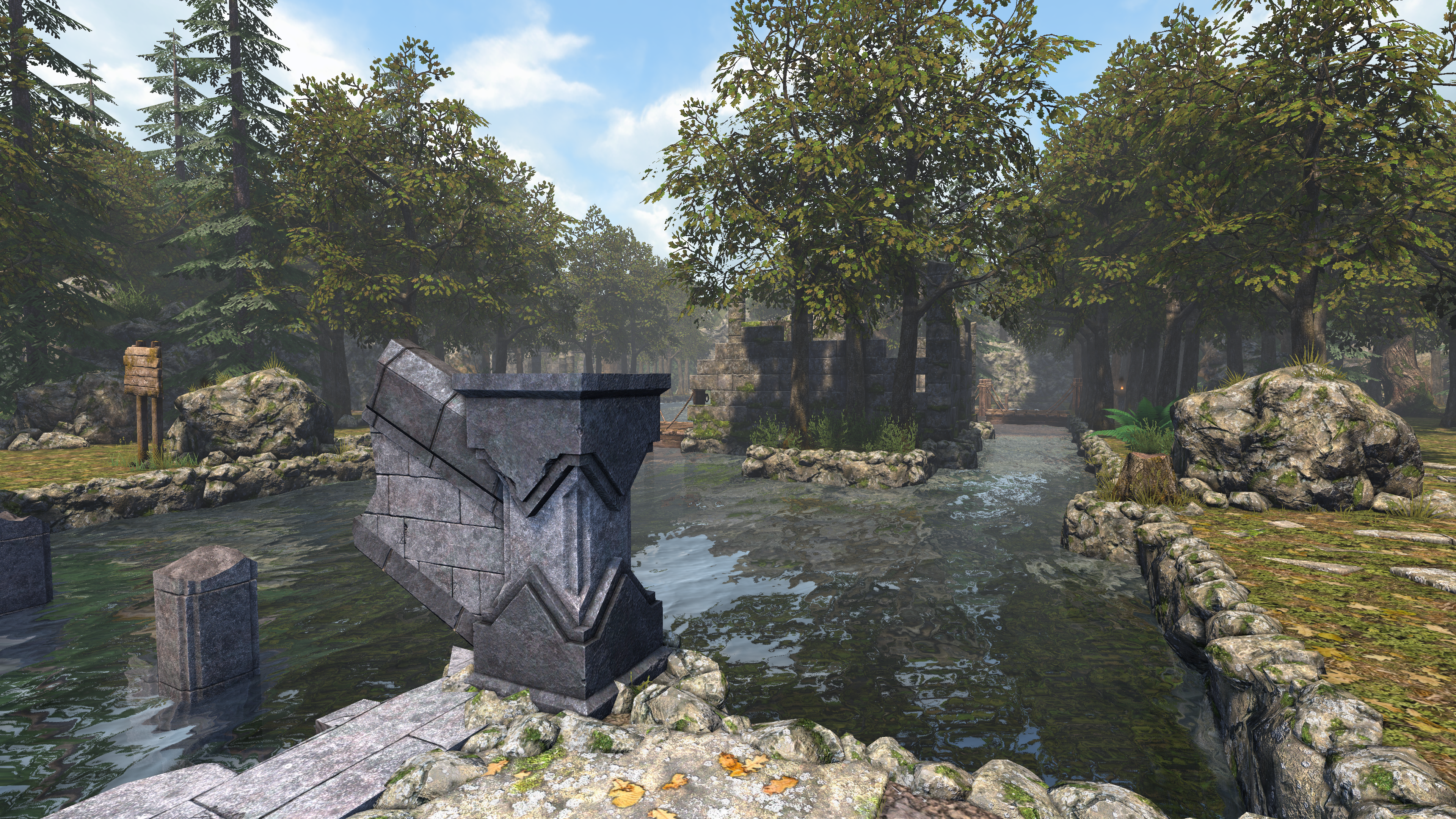
Pixel Boost is our weekly series devoted to the artistry of games, and the techniques required to run them at high resolutions.
What if a dungeon crawler was not, in fact, limited to the dank, dark underground? Grimrock 2 answers that question beautifully—in that it's utterly beautiful—as it marries a decades-old genre with the ability to explore the surface of the mysterious Isle of Nex.
Grimrock 2's environs range from fresh forests to sunny beaches to, yes, of course, moody dungeons. And they're all beautiful, and often austere, in a way that smartly blends the early days of dungeon crawlers with modern technology.
As always with Pixel Boost, we had to crank Grimrock to the limit. That called for downsampling. To do so, we enabled Nvidia's Dynamic Super Resolution in the Nvidia Control Panel, then ran Grimrock at 3840x2160 pixels. It ran just fine, although the UI unfortunately doesn't scale with resolution. That gave us a pretty tiny HUD, but made Nox all the prettier.
One tip: while the game would run at 5K (5120x2880), it had a tendency to crash when we snapped our screenshots with FRAPS. 4K performed flawlessly. Downsample away!

Pixel Boost is our weekly series devoted to the artistry of games, and the techniques required to run them at high resolutions.
What if a dungeon crawler was not, in fact, limited to the dank, dark underground? Grimrock 2 answers that question beautifully—in that it's utterly beautiful—as it marries a decades-old genre with the ability to explore the surface of the mysterious Isle of Nex.
Grimrock 2's environs range from fresh forests to sunny beaches to, yes, of course, moody dungeons. And they're all beautiful, and often austere, in a way that smartly blends the early days of dungeon crawlers with modern technology.
As always with Pixel Boost, we had to crank Grimrock to the limit. That called for downsampling. To do so, we enabled Nvidia's Dynamic Super Resolution in the Nvidia Control Panel, then ran Grimrock at 3840x2160 pixels. It ran just fine, although the UI unfortunately doesn't scale with resolution. That gave us a pretty tiny HUD, but made Nox all the prettier.
One tip: while the game would run at 5K (5120x2880), it had a tendency to crash when we snapped our screenshots with FRAPS. 4K performed flawlessly. Downsample away!
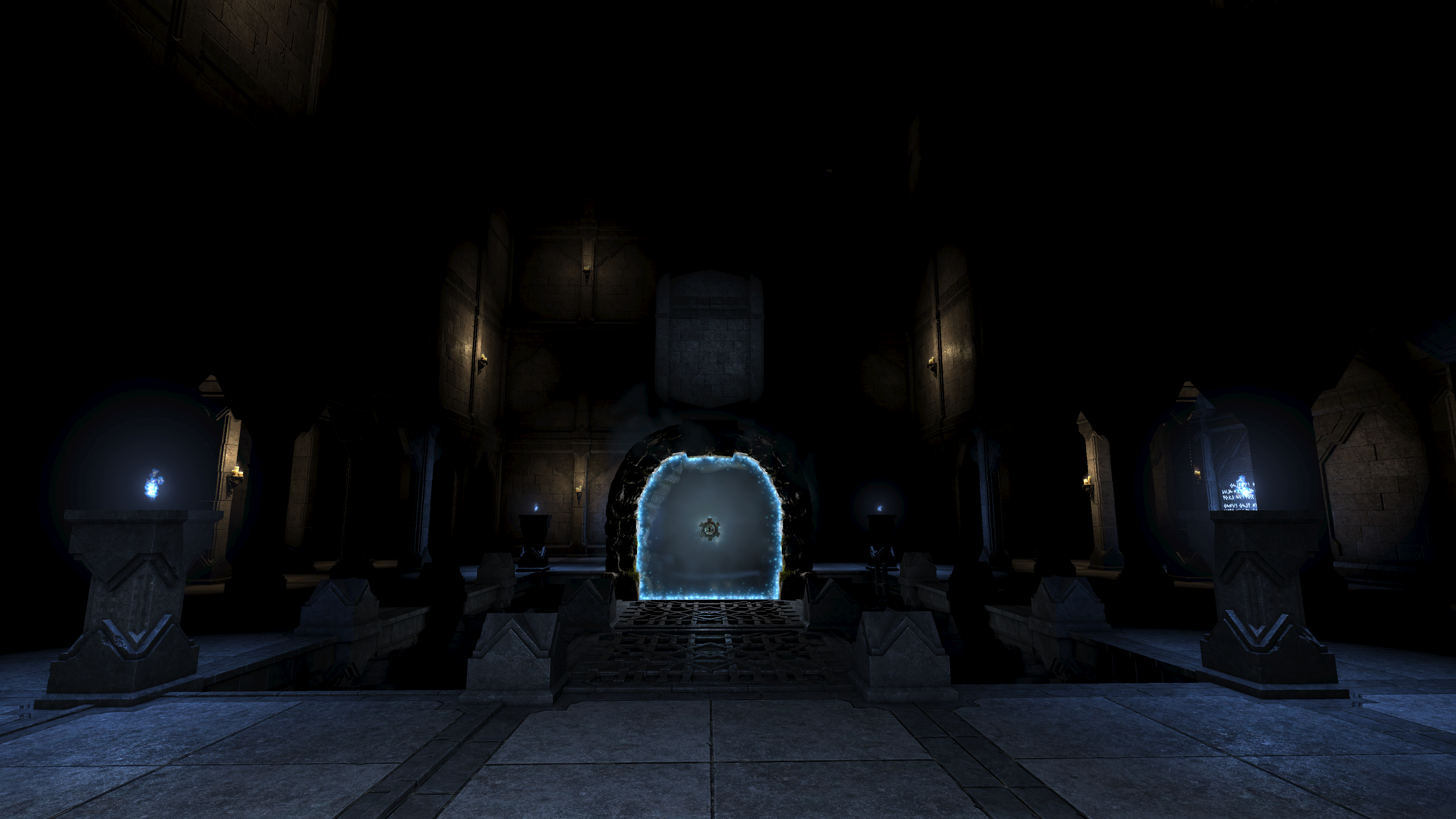
Pixel Boost is our weekly series devoted to the artistry of games, and the techniques required to run them at high resolutions.
What if a dungeon crawler was not, in fact, limited to the dank, dark underground? Grimrock 2 answers that question beautifully—in that it's utterly beautiful—as it marries a decades-old genre with the ability to explore the surface of the mysterious Isle of Nex.
Grimrock 2's environs range from fresh forests to sunny beaches to, yes, of course, moody dungeons. And they're all beautiful, and often austere, in a way that smartly blends the early days of dungeon crawlers with modern technology.
As always with Pixel Boost, we had to crank Grimrock to the limit. That called for downsampling. To do so, we enabled Nvidia's Dynamic Super Resolution in the Nvidia Control Panel, then ran Grimrock at 3840x2160 pixels. It ran just fine, although the UI unfortunately doesn't scale with resolution. That gave us a pretty tiny HUD, but made Nox all the prettier.
One tip: while the game would run at 5K (5120x2880), it had a tendency to crash when we snapped our screenshots with FRAPS. 4K performed flawlessly. Downsample away!
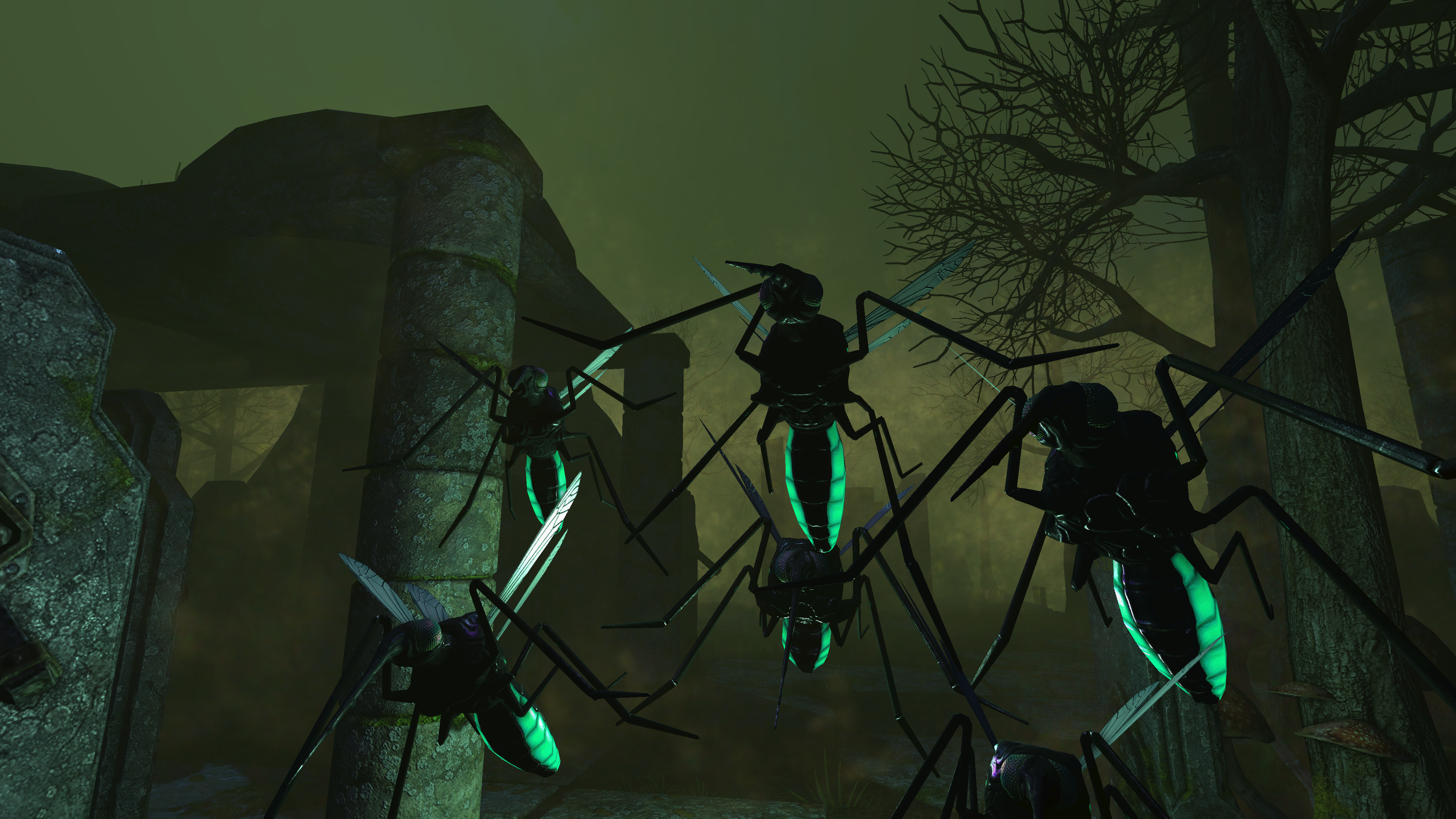
Pixel Boost is our weekly series devoted to the artistry of games, and the techniques required to run them at high resolutions.
What if a dungeon crawler was not, in fact, limited to the dank, dark underground? Grimrock 2 answers that question beautifully—in that it's utterly beautiful—as it marries a decades-old genre with the ability to explore the surface of the mysterious Isle of Nex.
Grimrock 2's environs range from fresh forests to sunny beaches to, yes, of course, moody dungeons. And they're all beautiful, and often austere, in a way that smartly blends the early days of dungeon crawlers with modern technology.
As always with Pixel Boost, we had to crank Grimrock to the limit. That called for downsampling. To do so, we enabled Nvidia's Dynamic Super Resolution in the Nvidia Control Panel, then ran Grimrock at 3840x2160 pixels. It ran just fine, although the UI unfortunately doesn't scale with resolution. That gave us a pretty tiny HUD, but made Nox all the prettier.
One tip: while the game would run at 5K (5120x2880), it had a tendency to crash when we snapped our screenshots with FRAPS. 4K performed flawlessly. Downsample away!
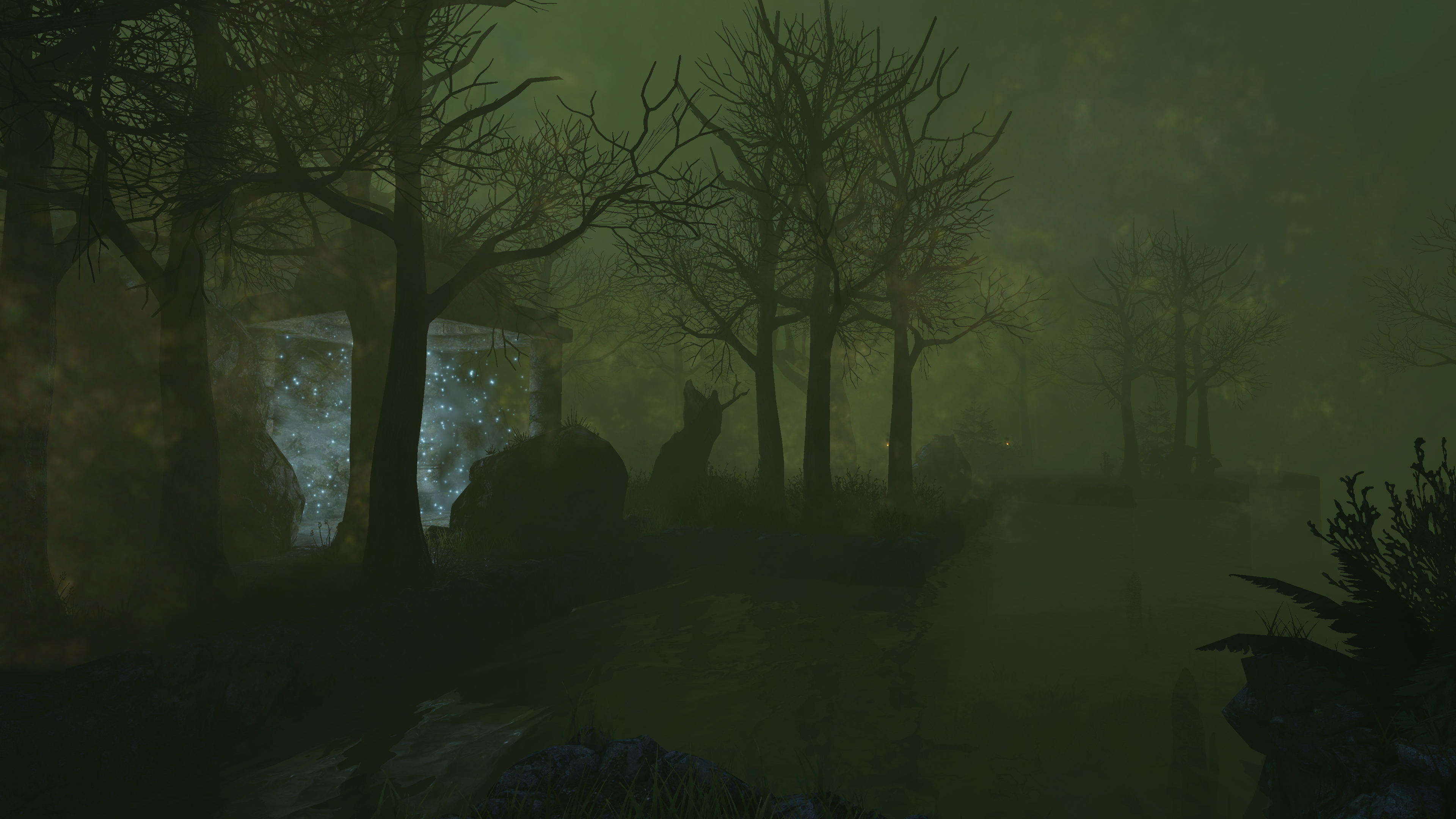
Pixel Boost is our weekly series devoted to the artistry of games, and the techniques required to run them at high resolutions.
What if a dungeon crawler was not, in fact, limited to the dank, dark underground? Grimrock 2 answers that question beautifully—in that it's utterly beautiful—as it marries a decades-old genre with the ability to explore the surface of the mysterious Isle of Nex.
Grimrock 2's environs range from fresh forests to sunny beaches to, yes, of course, moody dungeons. And they're all beautiful, and often austere, in a way that smartly blends the early days of dungeon crawlers with modern technology.
As always with Pixel Boost, we had to crank Grimrock to the limit. That called for downsampling. To do so, we enabled Nvidia's Dynamic Super Resolution in the Nvidia Control Panel, then ran Grimrock at 3840x2160 pixels. It ran just fine, although the UI unfortunately doesn't scale with resolution. That gave us a pretty tiny HUD, but made Nox all the prettier.
One tip: while the game would run at 5K (5120x2880), it had a tendency to crash when we snapped our screenshots with FRAPS. 4K performed flawlessly. Downsample away!
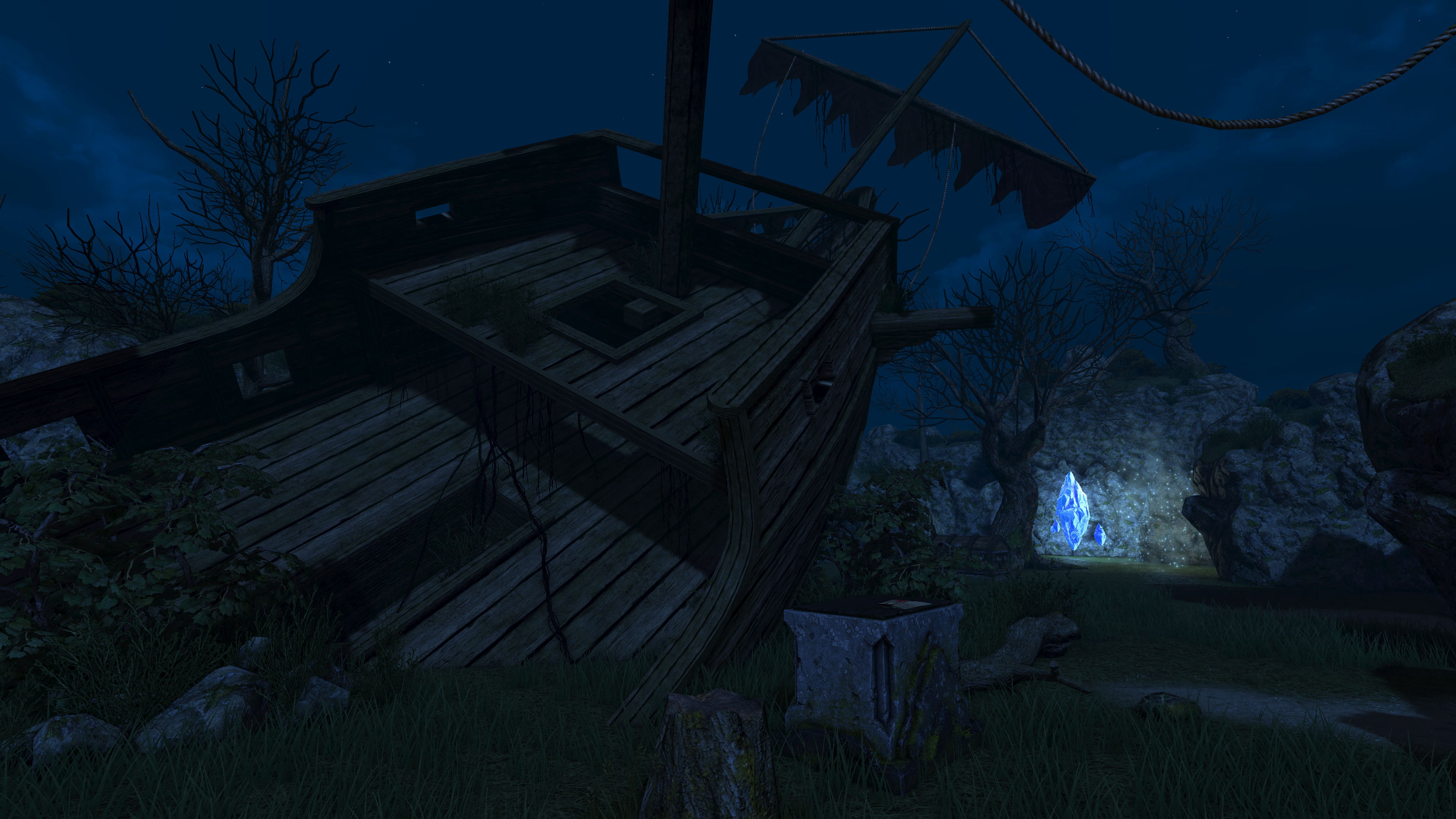
Pixel Boost is our weekly series devoted to the artistry of games, and the techniques required to run them at high resolutions.
What if a dungeon crawler was not, in fact, limited to the dank, dark underground? Grimrock 2 answers that question beautifully—in that it's utterly beautiful—as it marries a decades-old genre with the ability to explore the surface of the mysterious Isle of Nex.
Grimrock 2's environs range from fresh forests to sunny beaches to, yes, of course, moody dungeons. And they're all beautiful, and often austere, in a way that smartly blends the early days of dungeon crawlers with modern technology.
As always with Pixel Boost, we had to crank Grimrock to the limit. That called for downsampling. To do so, we enabled Nvidia's Dynamic Super Resolution in the Nvidia Control Panel, then ran Grimrock at 3840x2160 pixels. It ran just fine, although the UI unfortunately doesn't scale with resolution. That gave us a pretty tiny HUD, but made Nox all the prettier.
One tip: while the game would run at 5K (5120x2880), it had a tendency to crash when we snapped our screenshots with FRAPS. 4K performed flawlessly. Downsample away!
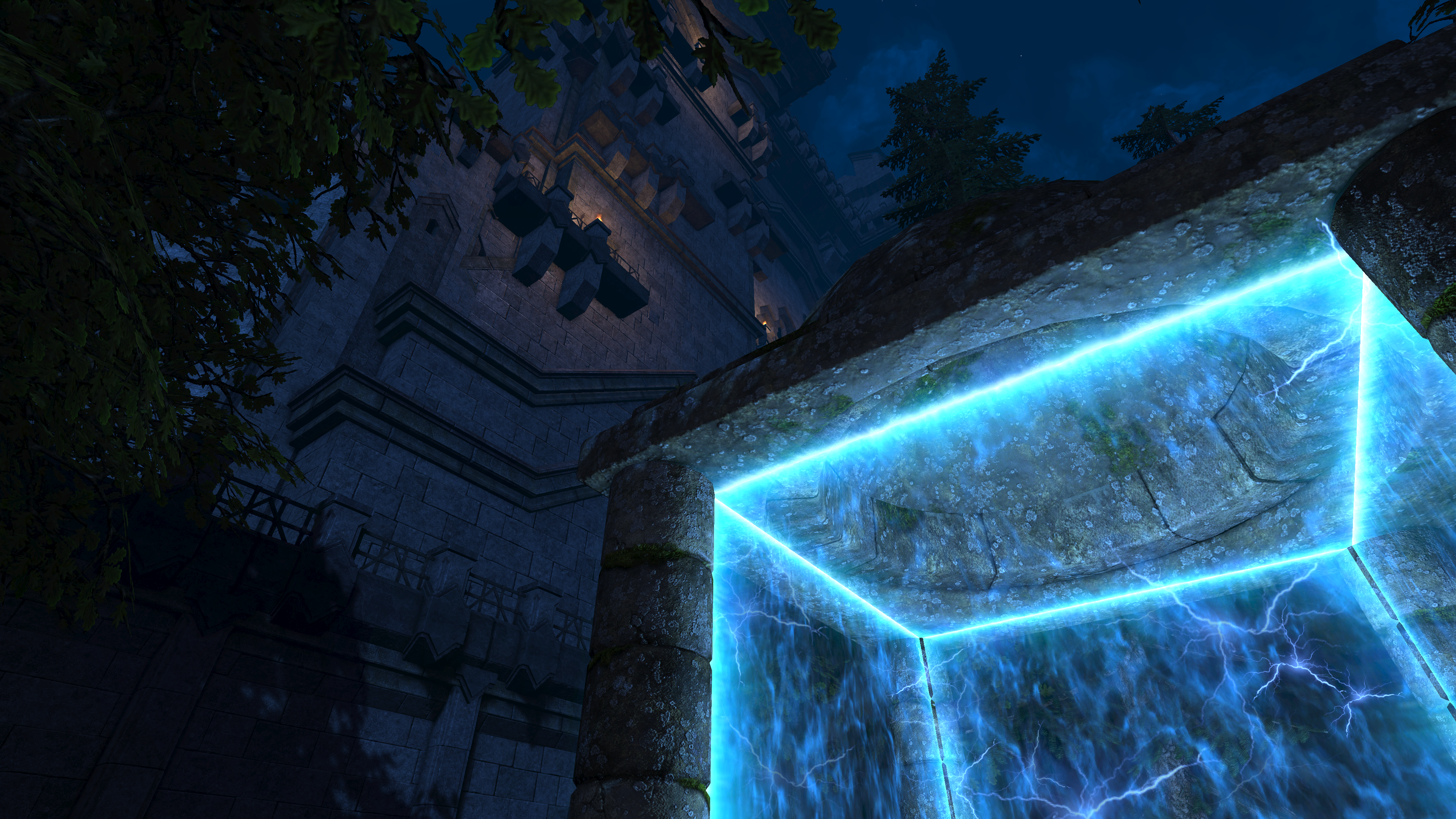
Pixel Boost is our weekly series devoted to the artistry of games, and the techniques required to run them at high resolutions.
What if a dungeon crawler was not, in fact, limited to the dank, dark underground? Grimrock 2 answers that question beautifully—in that it's utterly beautiful—as it marries a decades-old genre with the ability to explore the surface of the mysterious Isle of Nex.
Grimrock 2's environs range from fresh forests to sunny beaches to, yes, of course, moody dungeons. And they're all beautiful, and often austere, in a way that smartly blends the early days of dungeon crawlers with modern technology.
As always with Pixel Boost, we had to crank Grimrock to the limit. That called for downsampling. To do so, we enabled Nvidia's Dynamic Super Resolution in the Nvidia Control Panel, then ran Grimrock at 3840x2160 pixels. It ran just fine, although the UI unfortunately doesn't scale with resolution. That gave us a pretty tiny HUD, but made Nox all the prettier.
One tip: while the game would run at 5K (5120x2880), it had a tendency to crash when we snapped our screenshots with FRAPS. 4K performed flawlessly. Downsample away!
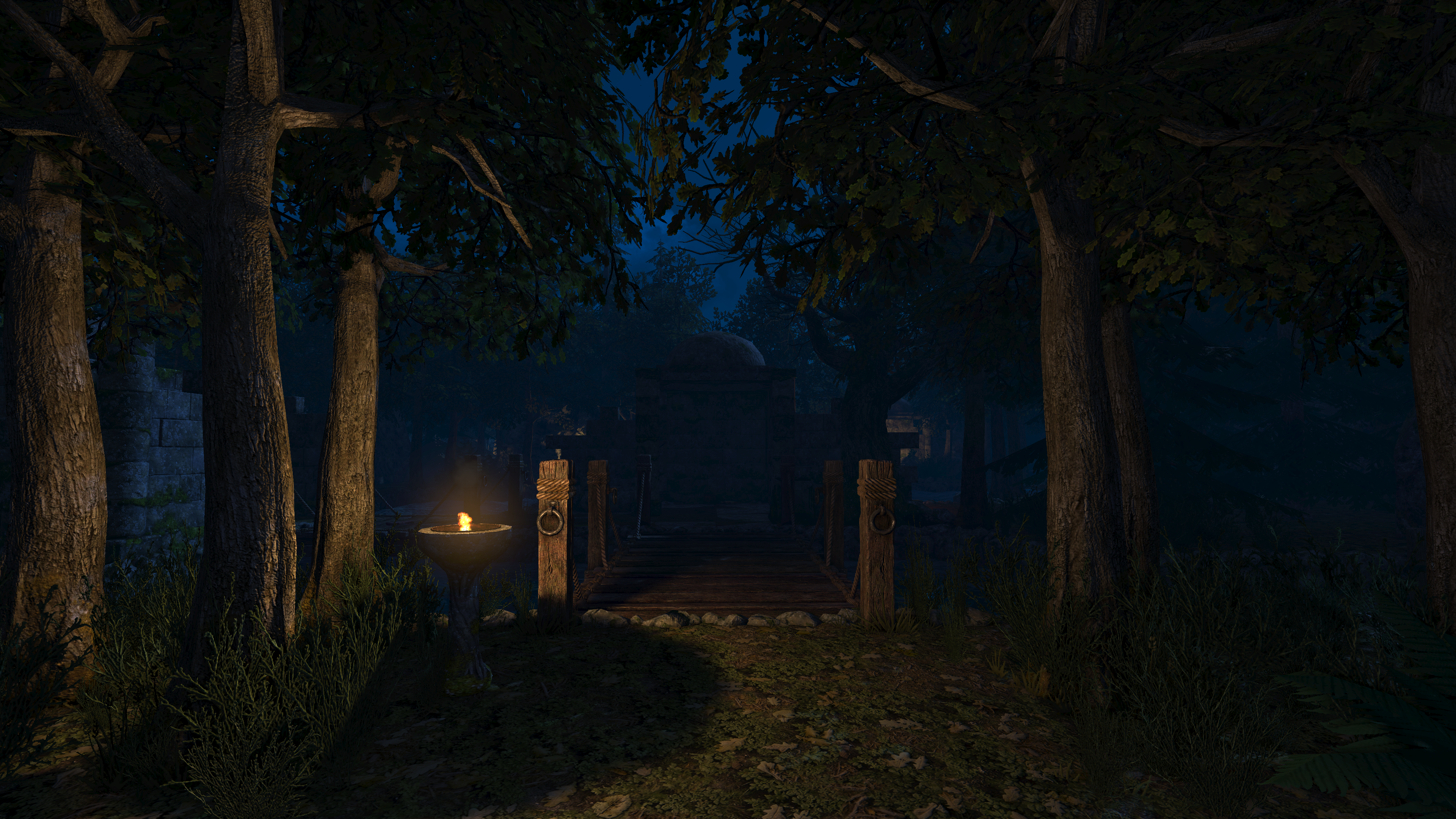
Pixel Boost is our weekly series devoted to the artistry of games, and the techniques required to run them at high resolutions.
What if a dungeon crawler was not, in fact, limited to the dank, dark underground? Grimrock 2 answers that question beautifully—in that it's utterly beautiful—as it marries a decades-old genre with the ability to explore the surface of the mysterious Isle of Nex.
Grimrock 2's environs range from fresh forests to sunny beaches to, yes, of course, moody dungeons. And they're all beautiful, and often austere, in a way that smartly blends the early days of dungeon crawlers with modern technology.
As always with Pixel Boost, we had to crank Grimrock to the limit. That called for downsampling. To do so, we enabled Nvidia's Dynamic Super Resolution in the Nvidia Control Panel, then ran Grimrock at 3840x2160 pixels. It ran just fine, although the UI unfortunately doesn't scale with resolution. That gave us a pretty tiny HUD, but made Nox all the prettier.
One tip: while the game would run at 5K (5120x2880), it had a tendency to crash when we snapped our screenshots with FRAPS. 4K performed flawlessly. Downsample away!

Pixel Boost is our weekly series devoted to the artistry of games, and the techniques required to run them at high resolutions.
What if a dungeon crawler was not, in fact, limited to the dank, dark underground? Grimrock 2 answers that question beautifully—in that it's utterly beautiful—as it marries a decades-old genre with the ability to explore the surface of the mysterious Isle of Nex.
Grimrock 2's environs range from fresh forests to sunny beaches to, yes, of course, moody dungeons. And they're all beautiful, and often austere, in a way that smartly blends the early days of dungeon crawlers with modern technology.
As always with Pixel Boost, we had to crank Grimrock to the limit. That called for downsampling. To do so, we enabled Nvidia's Dynamic Super Resolution in the Nvidia Control Panel, then ran Grimrock at 3840x2160 pixels. It ran just fine, although the UI unfortunately doesn't scale with resolution. That gave us a pretty tiny HUD, but made Nox all the prettier.
One tip: while the game would run at 5K (5120x2880), it had a tendency to crash when we snapped our screenshots with FRAPS. 4K performed flawlessly. Downsample away!

Pixel Boost is our weekly series devoted to the artistry of games, and the techniques required to run them at high resolutions.
What if a dungeon crawler was not, in fact, limited to the dank, dark underground? Grimrock 2 answers that question beautifully—in that it's utterly beautiful—as it marries a decades-old genre with the ability to explore the surface of the mysterious Isle of Nex.
Grimrock 2's environs range from fresh forests to sunny beaches to, yes, of course, moody dungeons. And they're all beautiful, and often austere, in a way that smartly blends the early days of dungeon crawlers with modern technology.
As always with Pixel Boost, we had to crank Grimrock to the limit. That called for downsampling. To do so, we enabled Nvidia's Dynamic Super Resolution in the Nvidia Control Panel, then ran Grimrock at 3840x2160 pixels. It ran just fine, although the UI unfortunately doesn't scale with resolution. That gave us a pretty tiny HUD, but made Nox all the prettier.
One tip: while the game would run at 5K (5120x2880), it had a tendency to crash when we snapped our screenshots with FRAPS. 4K performed flawlessly. Downsample away!
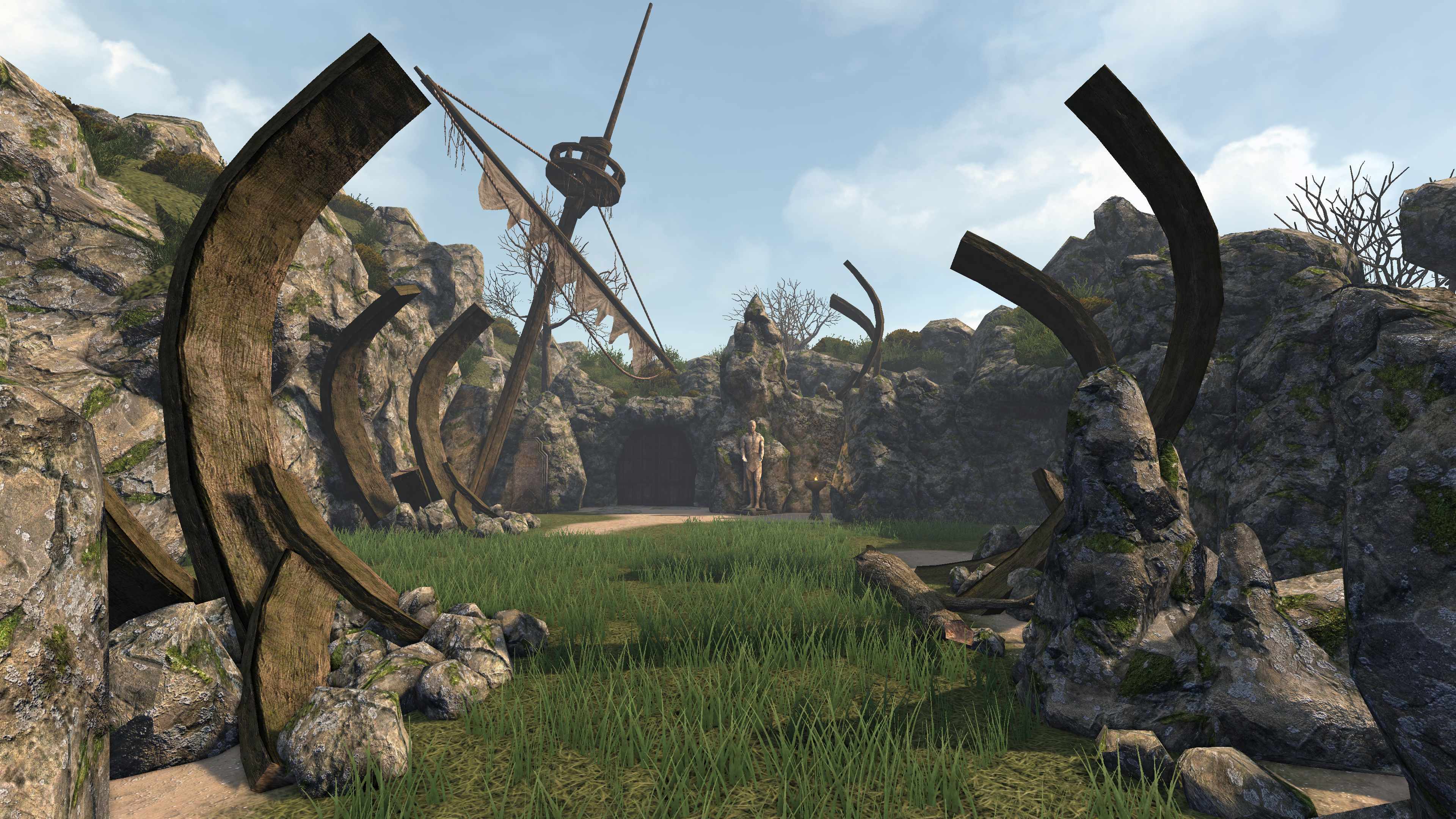
Pixel Boost is our weekly series devoted to the artistry of games, and the techniques required to run them at high resolutions.
What if a dungeon crawler was not, in fact, limited to the dank, dark underground? Grimrock 2 answers that question beautifully—in that it's utterly beautiful—as it marries a decades-old genre with the ability to explore the surface of the mysterious Isle of Nex.
Grimrock 2's environs range from fresh forests to sunny beaches to, yes, of course, moody dungeons. And they're all beautiful, and often austere, in a way that smartly blends the early days of dungeon crawlers with modern technology.
As always with Pixel Boost, we had to crank Grimrock to the limit. That called for downsampling. To do so, we enabled Nvidia's Dynamic Super Resolution in the Nvidia Control Panel, then ran Grimrock at 3840x2160 pixels. It ran just fine, although the UI unfortunately doesn't scale with resolution. That gave us a pretty tiny HUD, but made Nox all the prettier.
One tip: while the game would run at 5K (5120x2880), it had a tendency to crash when we snapped our screenshots with FRAPS. 4K performed flawlessly. Downsample away!
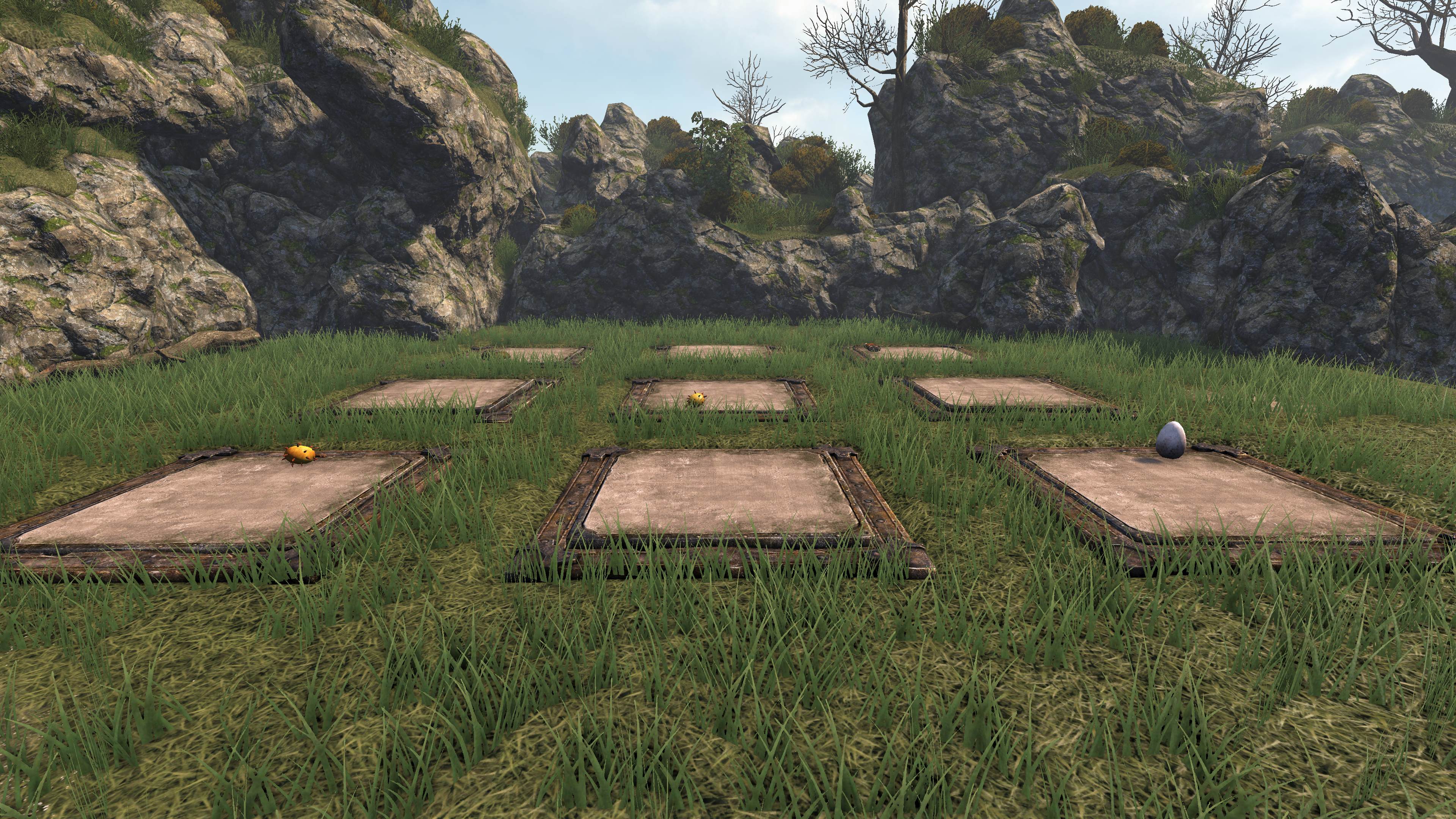
Pixel Boost is our weekly series devoted to the artistry of games, and the techniques required to run them at high resolutions.
What if a dungeon crawler was not, in fact, limited to the dank, dark underground? Grimrock 2 answers that question beautifully—in that it's utterly beautiful—as it marries a decades-old genre with the ability to explore the surface of the mysterious Isle of Nex.
Grimrock 2's environs range from fresh forests to sunny beaches to, yes, of course, moody dungeons. And they're all beautiful, and often austere, in a way that smartly blends the early days of dungeon crawlers with modern technology.
As always with Pixel Boost, we had to crank Grimrock to the limit. That called for downsampling. To do so, we enabled Nvidia's Dynamic Super Resolution in the Nvidia Control Panel, then ran Grimrock at 3840x2160 pixels. It ran just fine, although the UI unfortunately doesn't scale with resolution. That gave us a pretty tiny HUD, but made Nox all the prettier.
One tip: while the game would run at 5K (5120x2880), it had a tendency to crash when we snapped our screenshots with FRAPS. 4K performed flawlessly. Downsample away!

Pixel Boost is our weekly series devoted to the artistry of games, and the techniques required to run them at high resolutions.
What if a dungeon crawler was not, in fact, limited to the dank, dark underground? Grimrock 2 answers that question beautifully—in that it's utterly beautiful—as it marries a decades-old genre with the ability to explore the surface of the mysterious Isle of Nex.
Grimrock 2's environs range from fresh forests to sunny beaches to, yes, of course, moody dungeons. And they're all beautiful, and often austere, in a way that smartly blends the early days of dungeon crawlers with modern technology.
As always with Pixel Boost, we had to crank Grimrock to the limit. That called for downsampling. To do so, we enabled Nvidia's Dynamic Super Resolution in the Nvidia Control Panel, then ran Grimrock at 3840x2160 pixels. It ran just fine, although the UI unfortunately doesn't scale with resolution. That gave us a pretty tiny HUD, but made Nox all the prettier.
One tip: while the game would run at 5K (5120x2880), it had a tendency to crash when we snapped our screenshots with FRAPS. 4K performed flawlessly. Downsample away!

Pixel Boost is our weekly series devoted to the artistry of games, and the techniques required to run them at high resolutions.
What if a dungeon crawler was not, in fact, limited to the dank, dark underground? Grimrock 2 answers that question beautifully—in that it's utterly beautiful—as it marries a decades-old genre with the ability to explore the surface of the mysterious Isle of Nex.
Grimrock 2's environs range from fresh forests to sunny beaches to, yes, of course, moody dungeons. And they're all beautiful, and often austere, in a way that smartly blends the early days of dungeon crawlers with modern technology.
As always with Pixel Boost, we had to crank Grimrock to the limit. That called for downsampling. To do so, we enabled Nvidia's Dynamic Super Resolution in the Nvidia Control Panel, then ran Grimrock at 3840x2160 pixels. It ran just fine, although the UI unfortunately doesn't scale with resolution. That gave us a pretty tiny HUD, but made Nox all the prettier.
One tip: while the game would run at 5K (5120x2880), it had a tendency to crash when we snapped our screenshots with FRAPS. 4K performed flawlessly. Downsample away!
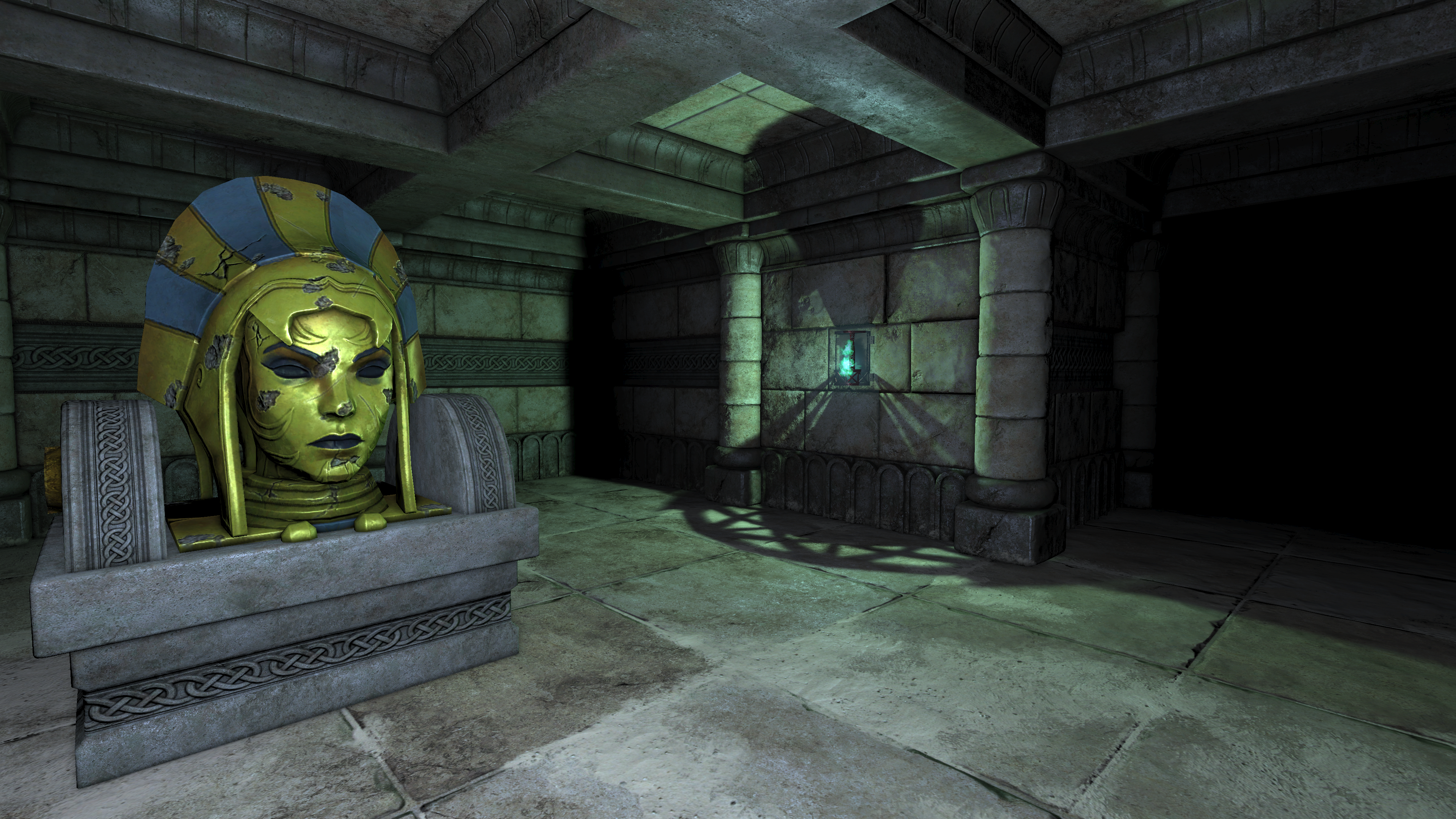
Pixel Boost is our weekly series devoted to the artistry of games, and the techniques required to run them at high resolutions.
What if a dungeon crawler was not, in fact, limited to the dank, dark underground? Grimrock 2 answers that question beautifully—in that it's utterly beautiful—as it marries a decades-old genre with the ability to explore the surface of the mysterious Isle of Nex.
Grimrock 2's environs range from fresh forests to sunny beaches to, yes, of course, moody dungeons. And they're all beautiful, and often austere, in a way that smartly blends the early days of dungeon crawlers with modern technology.
As always with Pixel Boost, we had to crank Grimrock to the limit. That called for downsampling. To do so, we enabled Nvidia's Dynamic Super Resolution in the Nvidia Control Panel, then ran Grimrock at 3840x2160 pixels. It ran just fine, although the UI unfortunately doesn't scale with resolution. That gave us a pretty tiny HUD, but made Nox all the prettier.
One tip: while the game would run at 5K (5120x2880), it had a tendency to crash when we snapped our screenshots with FRAPS. 4K performed flawlessly. Downsample away!

Pixel Boost is our weekly series devoted to the artistry of games, and the techniques required to run them at high resolutions.
What if a dungeon crawler was not, in fact, limited to the dank, dark underground? Grimrock 2 answers that question beautifully—in that it's utterly beautiful—as it marries a decades-old genre with the ability to explore the surface of the mysterious Isle of Nex.
Grimrock 2's environs range from fresh forests to sunny beaches to, yes, of course, moody dungeons. And they're all beautiful, and often austere, in a way that smartly blends the early days of dungeon crawlers with modern technology.
As always with Pixel Boost, we had to crank Grimrock to the limit. That called for downsampling. To do so, we enabled Nvidia's Dynamic Super Resolution in the Nvidia Control Panel, then ran Grimrock at 3840x2160 pixels. It ran just fine, although the UI unfortunately doesn't scale with resolution. That gave us a pretty tiny HUD, but made Nox all the prettier.
One tip: while the game would run at 5K (5120x2880), it had a tendency to crash when we snapped our screenshots with FRAPS. 4K performed flawlessly. Downsample away!

Pixel Boost is our weekly series devoted to the artistry of games, and the techniques required to run them at high resolutions.
What if a dungeon crawler was not, in fact, limited to the dank, dark underground? Grimrock 2 answers that question beautifully—in that it's utterly beautiful—as it marries a decades-old genre with the ability to explore the surface of the mysterious Isle of Nex.
Grimrock 2's environs range from fresh forests to sunny beaches to, yes, of course, moody dungeons. And they're all beautiful, and often austere, in a way that smartly blends the early days of dungeon crawlers with modern technology.
As always with Pixel Boost, we had to crank Grimrock to the limit. That called for downsampling. To do so, we enabled Nvidia's Dynamic Super Resolution in the Nvidia Control Panel, then ran Grimrock at 3840x2160 pixels. It ran just fine, although the UI unfortunately doesn't scale with resolution. That gave us a pretty tiny HUD, but made Nox all the prettier.
One tip: while the game would run at 5K (5120x2880), it had a tendency to crash when we snapped our screenshots with FRAPS. 4K performed flawlessly. Downsample away!
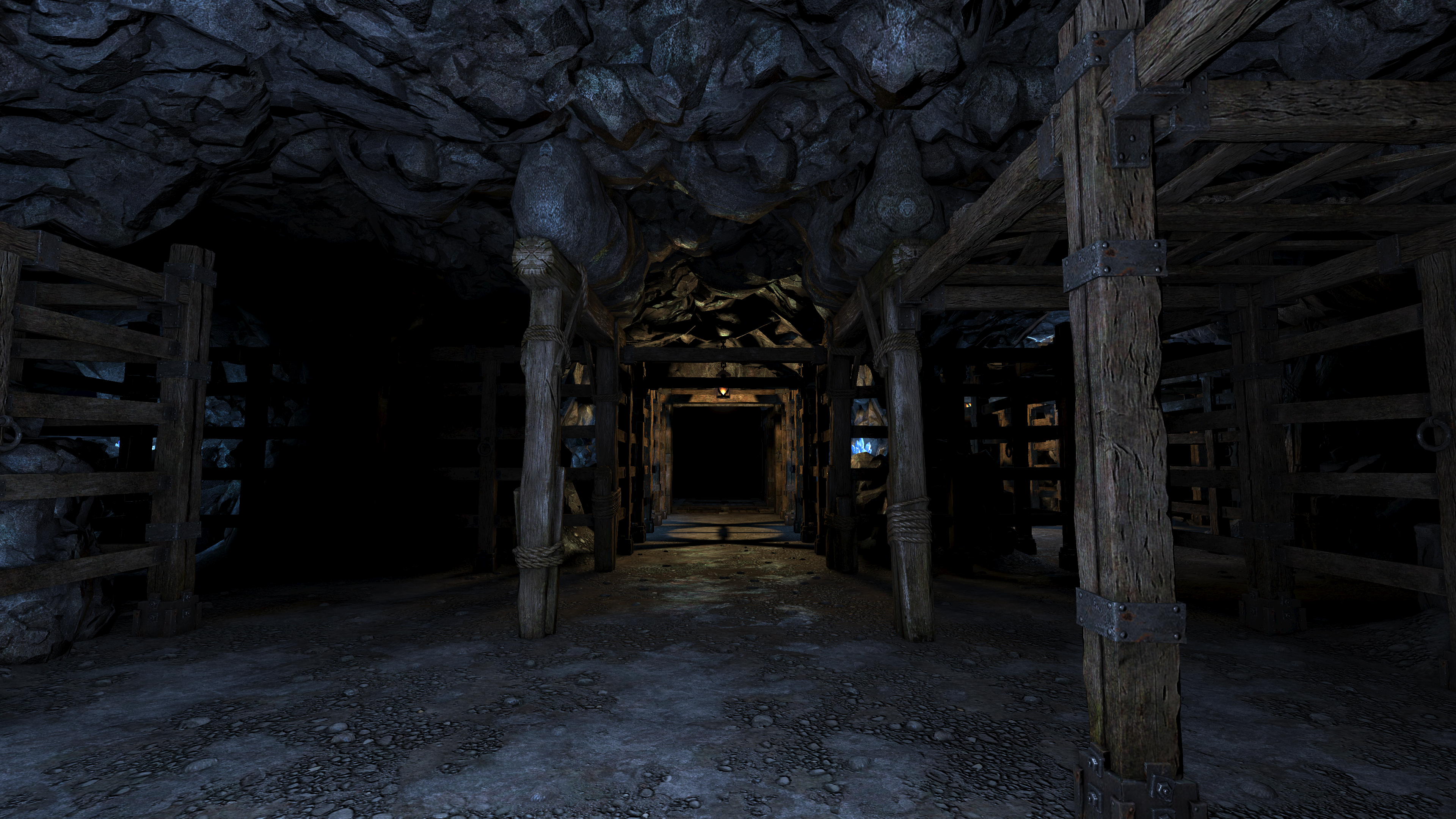
Pixel Boost is our weekly series devoted to the artistry of games, and the techniques required to run them at high resolutions.
What if a dungeon crawler was not, in fact, limited to the dank, dark underground? Grimrock 2 answers that question beautifully—in that it's utterly beautiful—as it marries a decades-old genre with the ability to explore the surface of the mysterious Isle of Nex.
Grimrock 2's environs range from fresh forests to sunny beaches to, yes, of course, moody dungeons. And they're all beautiful, and often austere, in a way that smartly blends the early days of dungeon crawlers with modern technology.
As always with Pixel Boost, we had to crank Grimrock to the limit. That called for downsampling. To do so, we enabled Nvidia's Dynamic Super Resolution in the Nvidia Control Panel, then ran Grimrock at 3840x2160 pixels. It ran just fine, although the UI unfortunately doesn't scale with resolution. That gave us a pretty tiny HUD, but made Nox all the prettier.
One tip: while the game would run at 5K (5120x2880), it had a tendency to crash when we snapped our screenshots with FRAPS. 4K performed flawlessly. Downsample away!
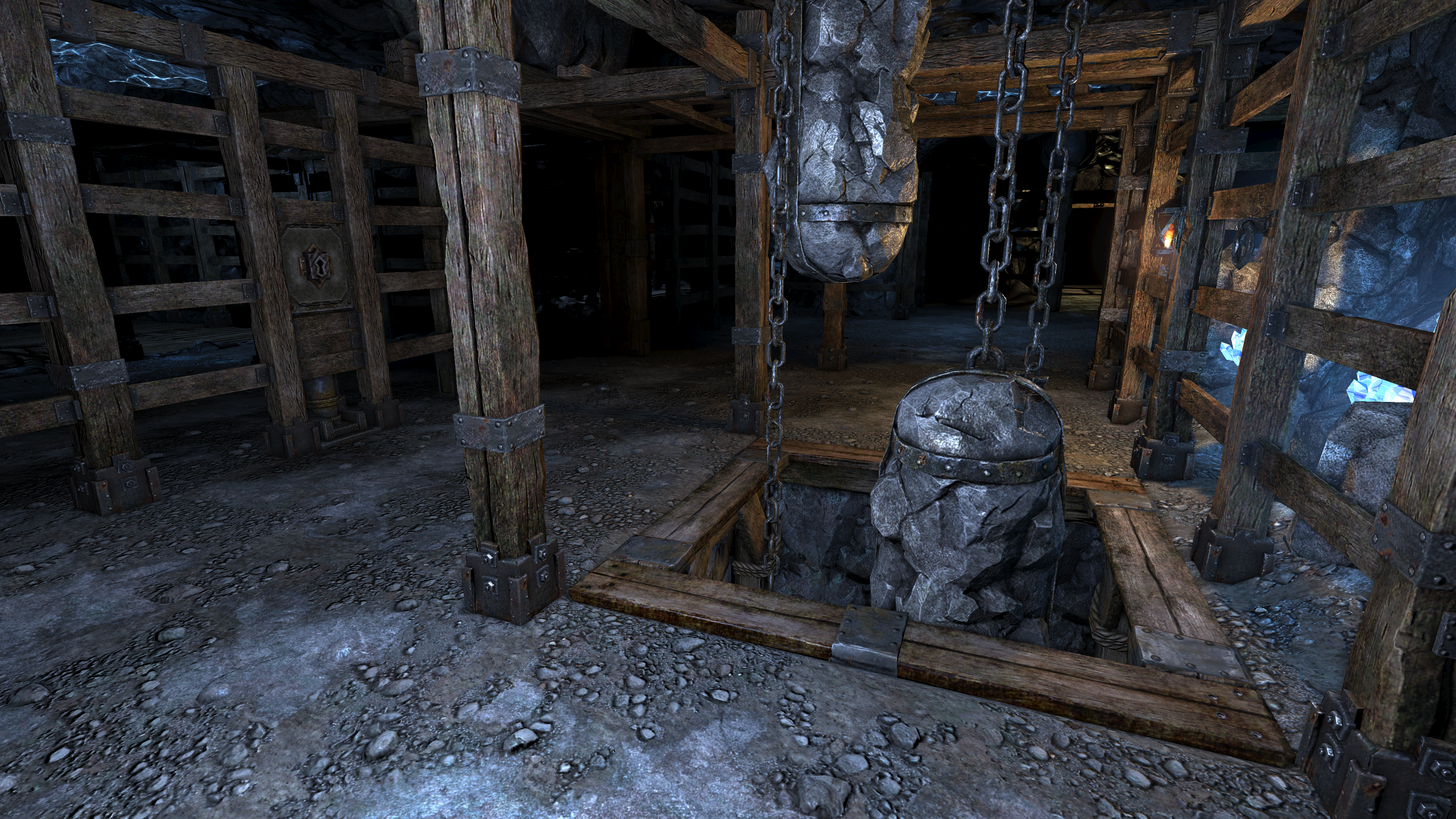
Pixel Boost is our weekly series devoted to the artistry of games, and the techniques required to run them at high resolutions.
What if a dungeon crawler was not, in fact, limited to the dank, dark underground? Grimrock 2 answers that question beautifully—in that it's utterly beautiful—as it marries a decades-old genre with the ability to explore the surface of the mysterious Isle of Nex.
Grimrock 2's environs range from fresh forests to sunny beaches to, yes, of course, moody dungeons. And they're all beautiful, and often austere, in a way that smartly blends the early days of dungeon crawlers with modern technology.
As always with Pixel Boost, we had to crank Grimrock to the limit. That called for downsampling. To do so, we enabled Nvidia's Dynamic Super Resolution in the Nvidia Control Panel, then ran Grimrock at 3840x2160 pixels. It ran just fine, although the UI unfortunately doesn't scale with resolution. That gave us a pretty tiny HUD, but made Nox all the prettier.
One tip: while the game would run at 5K (5120x2880), it had a tendency to crash when we snapped our screenshots with FRAPS. 4K performed flawlessly. Downsample away!
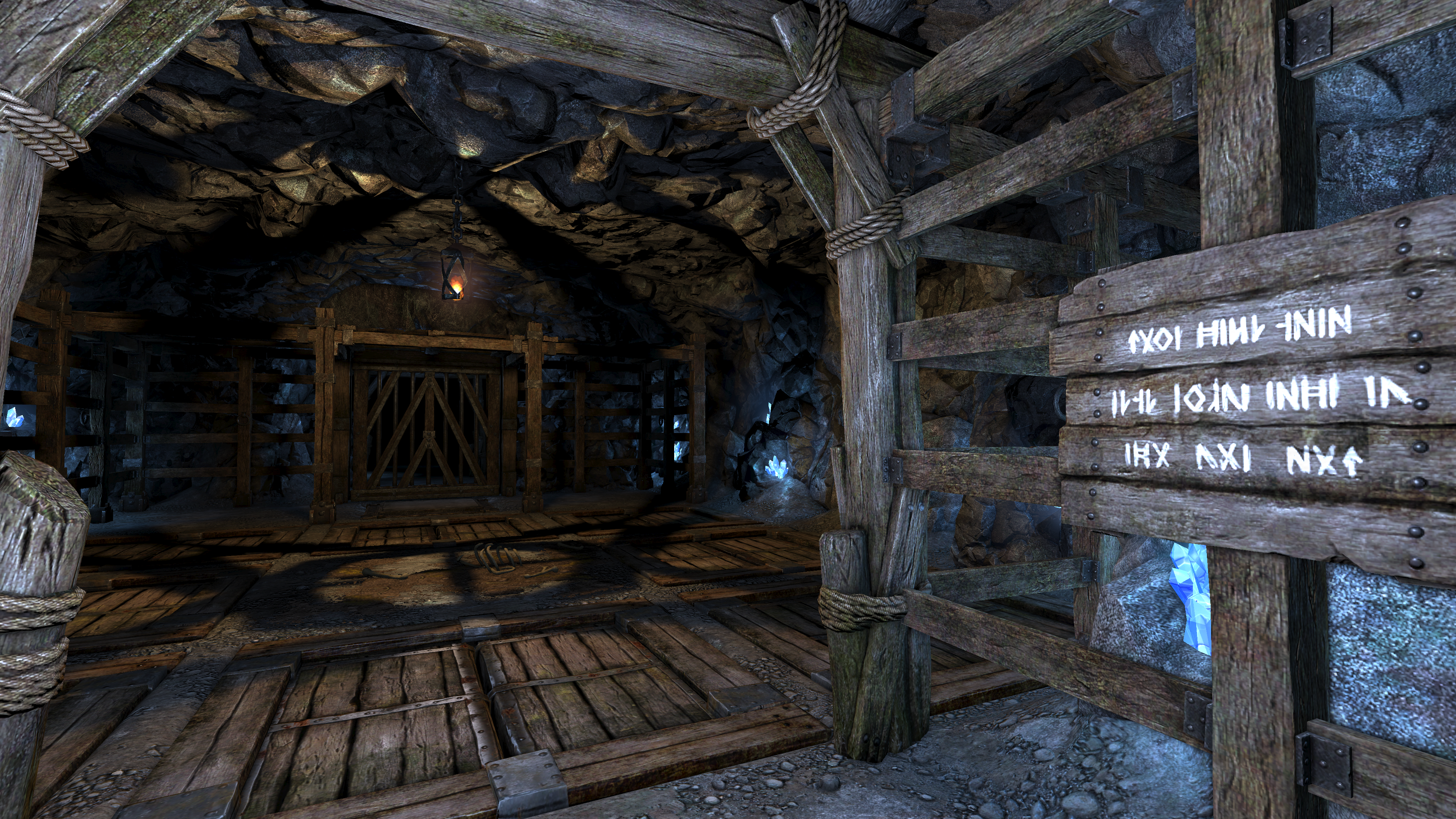
Pixel Boost is our weekly series devoted to the artistry of games, and the techniques required to run them at high resolutions.
What if a dungeon crawler was not, in fact, limited to the dank, dark underground? Grimrock 2 answers that question beautifully—in that it's utterly beautiful—as it marries a decades-old genre with the ability to explore the surface of the mysterious Isle of Nex.
Grimrock 2's environs range from fresh forests to sunny beaches to, yes, of course, moody dungeons. And they're all beautiful, and often austere, in a way that smartly blends the early days of dungeon crawlers with modern technology.
As always with Pixel Boost, we had to crank Grimrock to the limit. That called for downsampling. To do so, we enabled Nvidia's Dynamic Super Resolution in the Nvidia Control Panel, then ran Grimrock at 3840x2160 pixels. It ran just fine, although the UI unfortunately doesn't scale with resolution. That gave us a pretty tiny HUD, but made Nox all the prettier.
One tip: while the game would run at 5K (5120x2880), it had a tendency to crash when we snapped our screenshots with FRAPS. 4K performed flawlessly. Downsample away!
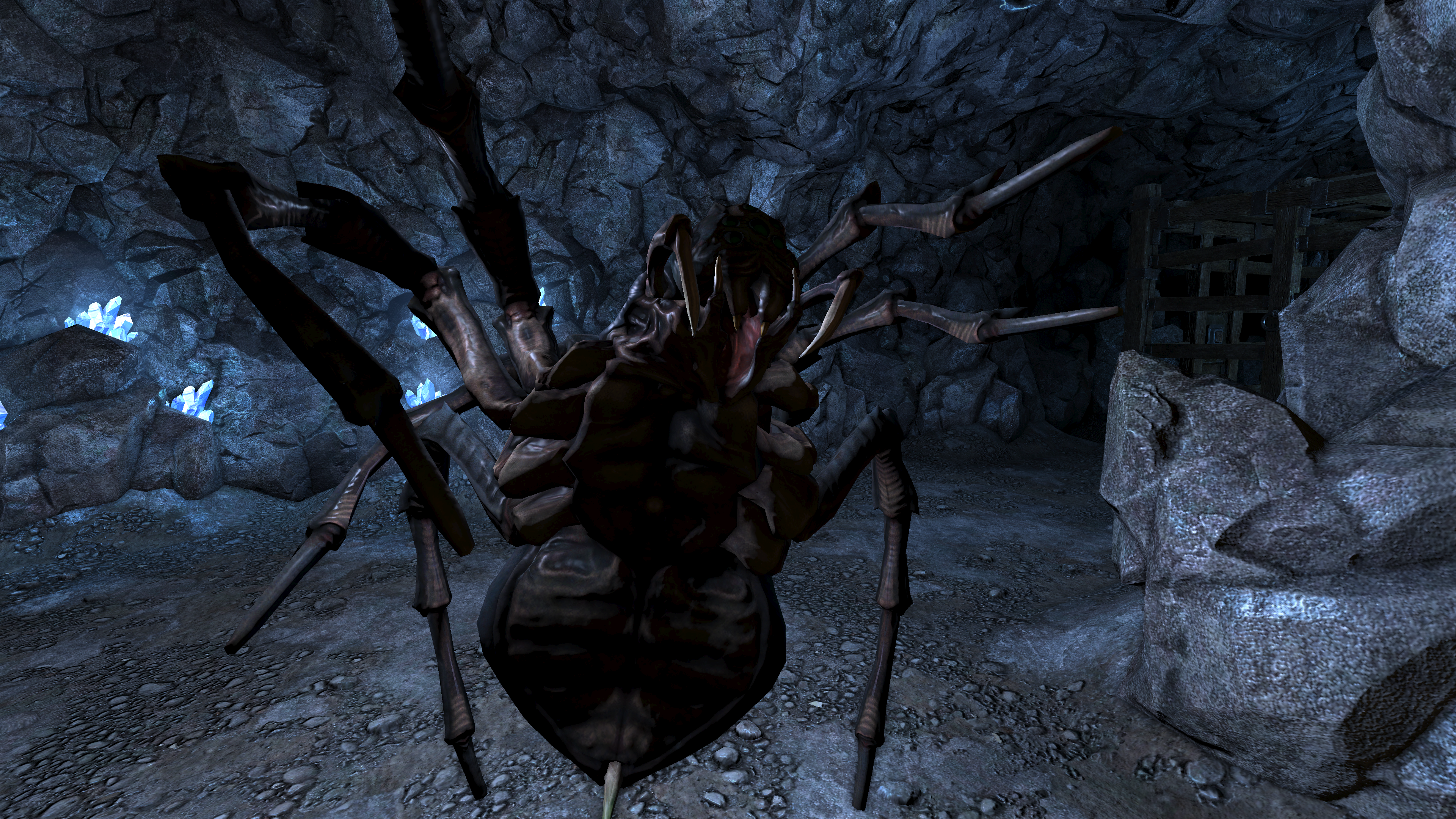
Pixel Boost is our weekly series devoted to the artistry of games, and the techniques required to run them at high resolutions.
What if a dungeon crawler was not, in fact, limited to the dank, dark underground? Grimrock 2 answers that question beautifully—in that it's utterly beautiful—as it marries a decades-old genre with the ability to explore the surface of the mysterious Isle of Nex.
Grimrock 2's environs range from fresh forests to sunny beaches to, yes, of course, moody dungeons. And they're all beautiful, and often austere, in a way that smartly blends the early days of dungeon crawlers with modern technology.
As always with Pixel Boost, we had to crank Grimrock to the limit. That called for downsampling. To do so, we enabled Nvidia's Dynamic Super Resolution in the Nvidia Control Panel, then ran Grimrock at 3840x2160 pixels. It ran just fine, although the UI unfortunately doesn't scale with resolution. That gave us a pretty tiny HUD, but made Nox all the prettier.
One tip: while the game would run at 5K (5120x2880), it had a tendency to crash when we snapped our screenshots with FRAPS. 4K performed flawlessly. Downsample away!
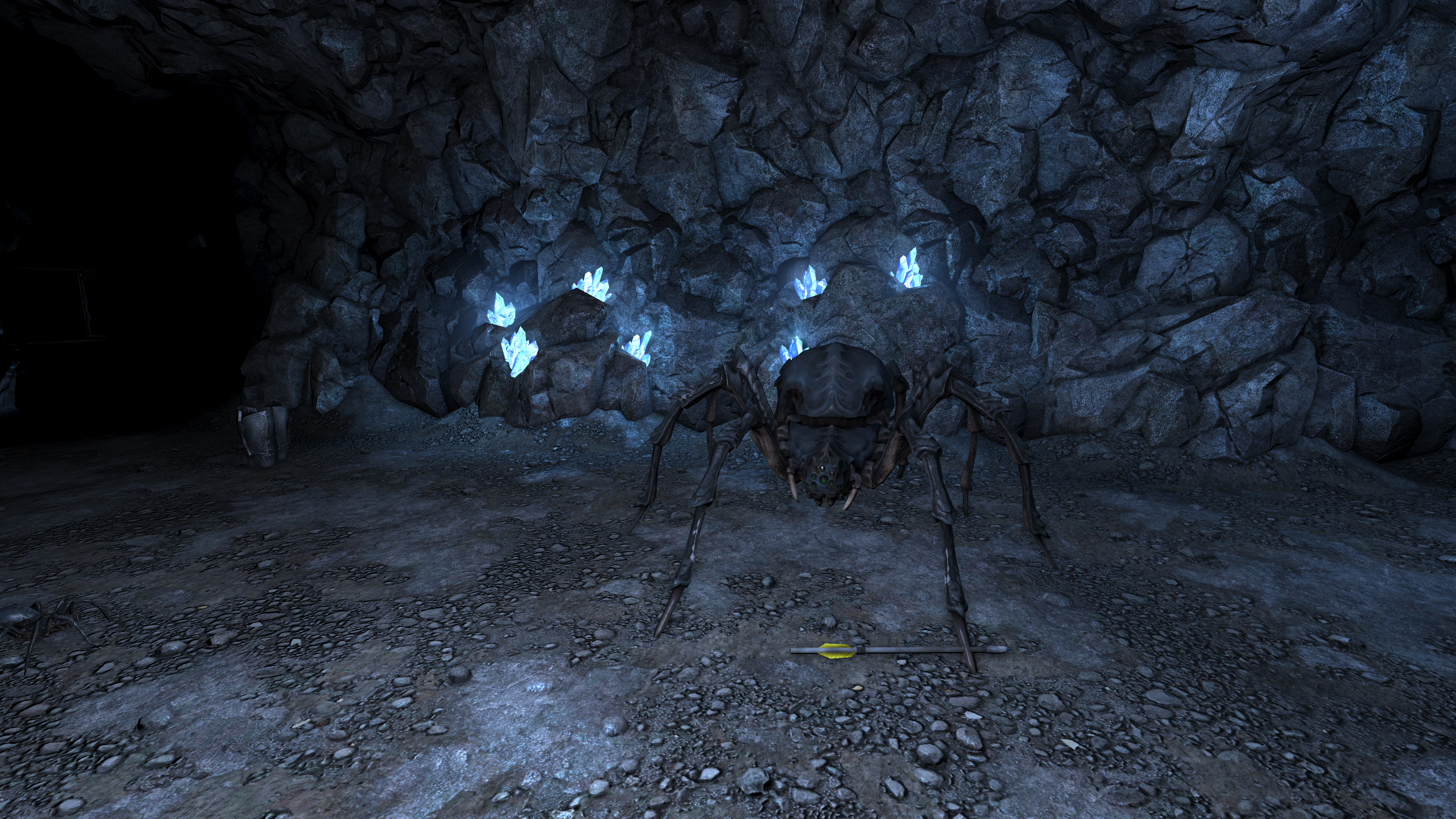
Pixel Boost is our weekly series devoted to the artistry of games, and the techniques required to run them at high resolutions.
What if a dungeon crawler was not, in fact, limited to the dank, dark underground? Grimrock 2 answers that question beautifully—in that it's utterly beautiful—as it marries a decades-old genre with the ability to explore the surface of the mysterious Isle of Nex.
Grimrock 2's environs range from fresh forests to sunny beaches to, yes, of course, moody dungeons. And they're all beautiful, and often austere, in a way that smartly blends the early days of dungeon crawlers with modern technology.
As always with Pixel Boost, we had to crank Grimrock to the limit. That called for downsampling. To do so, we enabled Nvidia's Dynamic Super Resolution in the Nvidia Control Panel, then ran Grimrock at 3840x2160 pixels. It ran just fine, although the UI unfortunately doesn't scale with resolution. That gave us a pretty tiny HUD, but made Nox all the prettier.
One tip: while the game would run at 5K (5120x2880), it had a tendency to crash when we snapped our screenshots with FRAPS. 4K performed flawlessly. Downsample away!
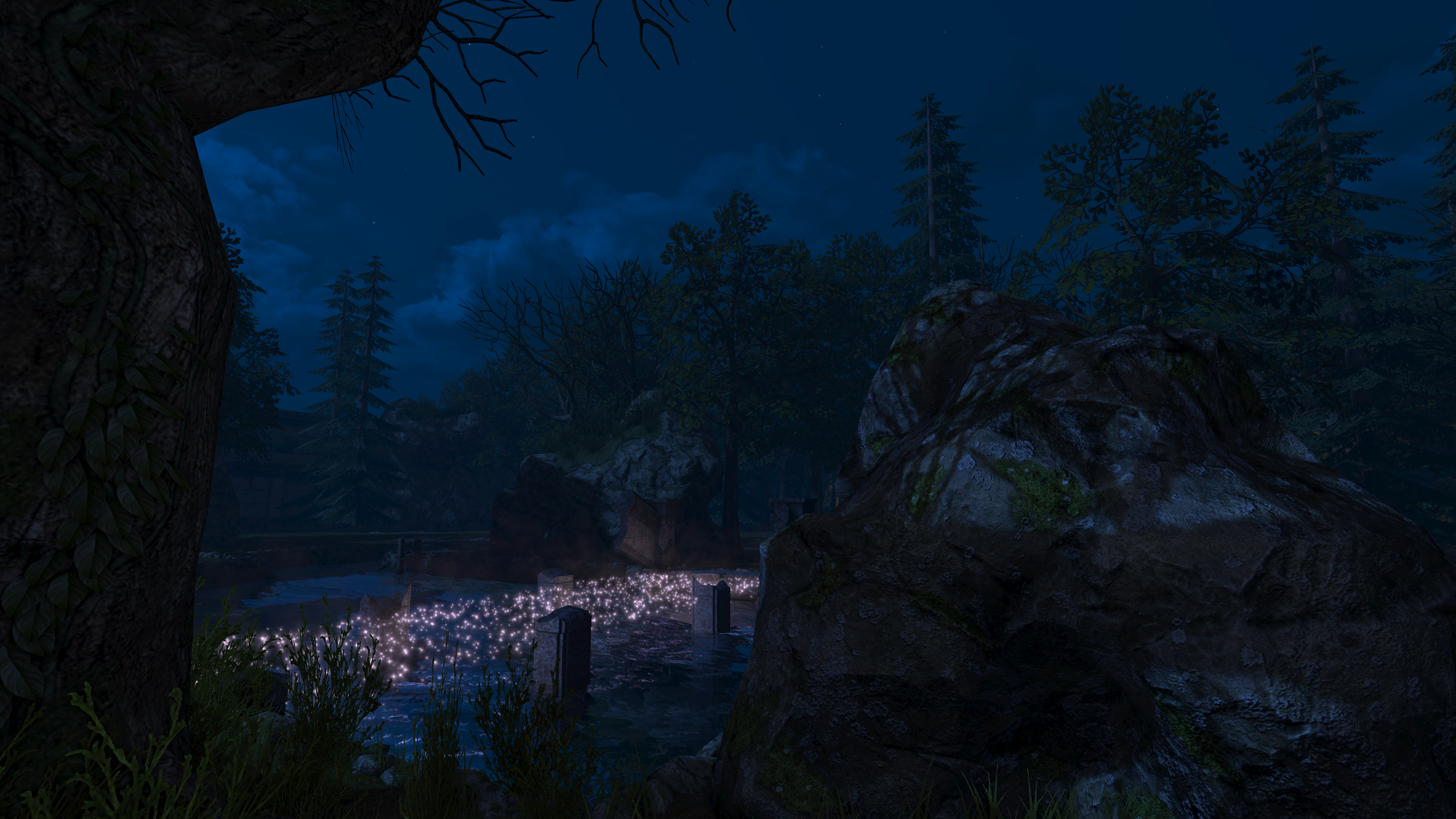
Pixel Boost is our weekly series devoted to the artistry of games, and the techniques required to run them at high resolutions.
What if a dungeon crawler was not, in fact, limited to the dank, dark underground? Grimrock 2 answers that question beautifully—in that it's utterly beautiful—as it marries a decades-old genre with the ability to explore the surface of the mysterious Isle of Nex.
Grimrock 2's environs range from fresh forests to sunny beaches to, yes, of course, moody dungeons. And they're all beautiful, and often austere, in a way that smartly blends the early days of dungeon crawlers with modern technology.
As always with Pixel Boost, we had to crank Grimrock to the limit. That called for downsampling. To do so, we enabled Nvidia's Dynamic Super Resolution in the Nvidia Control Panel, then ran Grimrock at 3840x2160 pixels. It ran just fine, although the UI unfortunately doesn't scale with resolution. That gave us a pretty tiny HUD, but made Nox all the prettier.
One tip: while the game would run at 5K (5120x2880), it had a tendency to crash when we snapped our screenshots with FRAPS. 4K performed flawlessly. Downsample away!
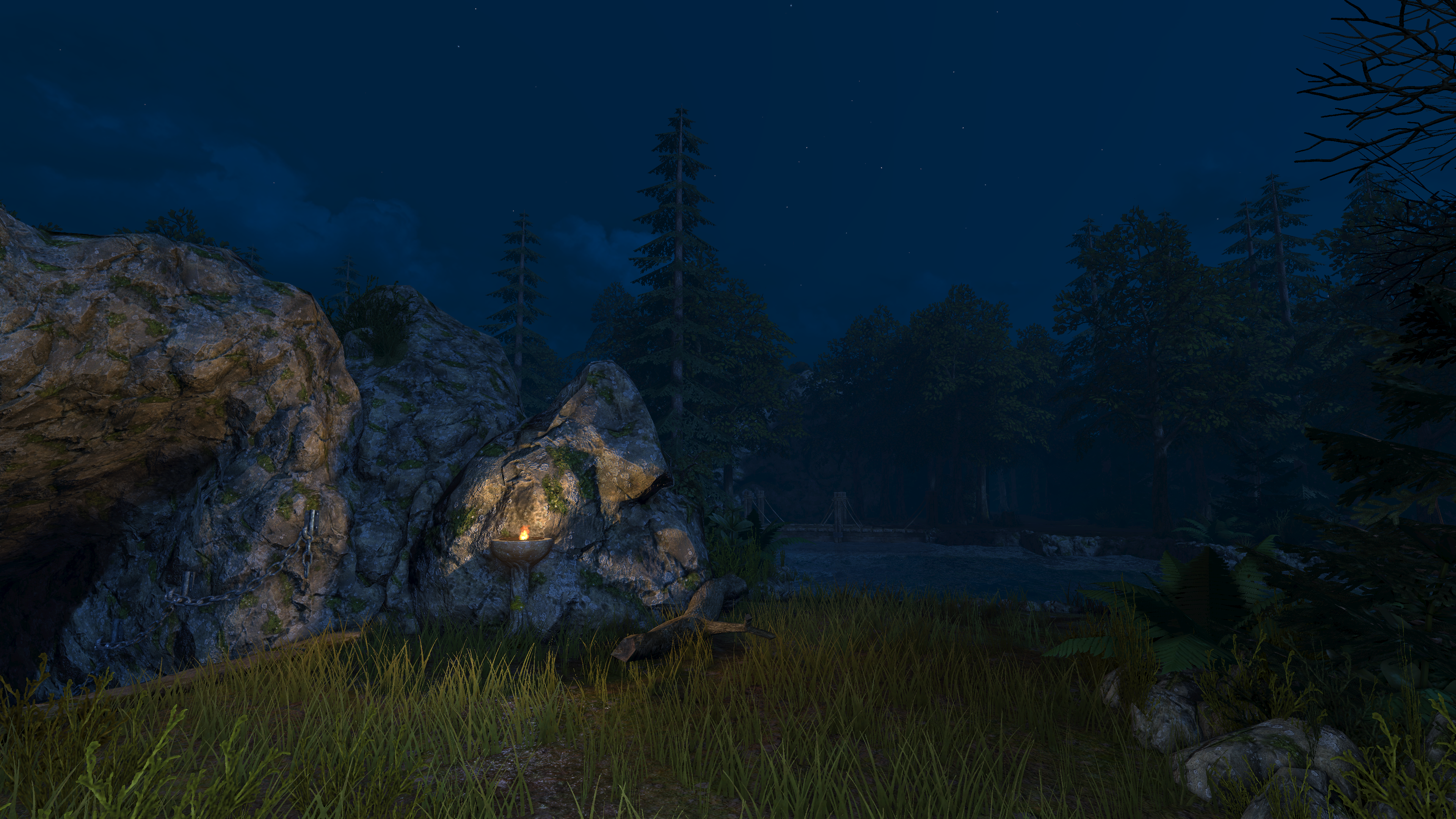
Pixel Boost is our weekly series devoted to the artistry of games, and the techniques required to run them at high resolutions.
What if a dungeon crawler was not, in fact, limited to the dank, dark underground? Grimrock 2 answers that question beautifully—in that it's utterly beautiful—as it marries a decades-old genre with the ability to explore the surface of the mysterious Isle of Nex.
Grimrock 2's environs range from fresh forests to sunny beaches to, yes, of course, moody dungeons. And they're all beautiful, and often austere, in a way that smartly blends the early days of dungeon crawlers with modern technology.
As always with Pixel Boost, we had to crank Grimrock to the limit. That called for downsampling. To do so, we enabled Nvidia's Dynamic Super Resolution in the Nvidia Control Panel, then ran Grimrock at 3840x2160 pixels. It ran just fine, although the UI unfortunately doesn't scale with resolution. That gave us a pretty tiny HUD, but made Nox all the prettier.
One tip: while the game would run at 5K (5120x2880), it had a tendency to crash when we snapped our screenshots with FRAPS. 4K performed flawlessly. Downsample away!

Pixel Boost is our weekly series devoted to the artistry of games, and the techniques required to run them at high resolutions.
What if a dungeon crawler was not, in fact, limited to the dank, dark underground? Grimrock 2 answers that question beautifully—in that it's utterly beautiful—as it marries a decades-old genre with the ability to explore the surface of the mysterious Isle of Nex.
Grimrock 2's environs range from fresh forests to sunny beaches to, yes, of course, moody dungeons. And they're all beautiful, and often austere, in a way that smartly blends the early days of dungeon crawlers with modern technology.
As always with Pixel Boost, we had to crank Grimrock to the limit. That called for downsampling. To do so, we enabled Nvidia's Dynamic Super Resolution in the Nvidia Control Panel, then ran Grimrock at 3840x2160 pixels. It ran just fine, although the UI unfortunately doesn't scale with resolution. That gave us a pretty tiny HUD, but made Nox all the prettier.
One tip: while the game would run at 5K (5120x2880), it had a tendency to crash when we snapped our screenshots with FRAPS. 4K performed flawlessly. Downsample away!

Pixel Boost is our weekly series devoted to the artistry of games, and the techniques required to run them at high resolutions.
What if a dungeon crawler was not, in fact, limited to the dank, dark underground? Grimrock 2 answers that question beautifully—in that it's utterly beautiful—as it marries a decades-old genre with the ability to explore the surface of the mysterious Isle of Nex.
Grimrock 2's environs range from fresh forests to sunny beaches to, yes, of course, moody dungeons. And they're all beautiful, and often austere, in a way that smartly blends the early days of dungeon crawlers with modern technology.
As always with Pixel Boost, we had to crank Grimrock to the limit. That called for downsampling. To do so, we enabled Nvidia's Dynamic Super Resolution in the Nvidia Control Panel, then ran Grimrock at 3840x2160 pixels. It ran just fine, although the UI unfortunately doesn't scale with resolution. That gave us a pretty tiny HUD, but made Nox all the prettier.
One tip: while the game would run at 5K (5120x2880), it had a tendency to crash when we snapped our screenshots with FRAPS. 4K performed flawlessly. Downsample away!

Pixel Boost is our weekly series devoted to the artistry of games, and the techniques required to run them at high resolutions.
What if a dungeon crawler was not, in fact, limited to the dank, dark underground? Grimrock 2 answers that question beautifully—in that it's utterly beautiful—as it marries a decades-old genre with the ability to explore the surface of the mysterious Isle of Nex.
Grimrock 2's environs range from fresh forests to sunny beaches to, yes, of course, moody dungeons. And they're all beautiful, and often austere, in a way that smartly blends the early days of dungeon crawlers with modern technology.
As always with Pixel Boost, we had to crank Grimrock to the limit. That called for downsampling. To do so, we enabled Nvidia's Dynamic Super Resolution in the Nvidia Control Panel, then ran Grimrock at 3840x2160 pixels. It ran just fine, although the UI unfortunately doesn't scale with resolution. That gave us a pretty tiny HUD, but made Nox all the prettier.
One tip: while the game would run at 5K (5120x2880), it had a tendency to crash when we snapped our screenshots with FRAPS. 4K performed flawlessly. Downsample away!

Wes has been covering games and hardware for more than 10 years, first at tech sites like The Wirecutter and Tested before joining the PC Gamer team in 2014. Wes plays a little bit of everything, but he'll always jump at the chance to cover emulation and Japanese games.
When he's not obsessively optimizing and re-optimizing a tangle of conveyor belts in Satisfactory (it's really becoming a problem), he's probably playing a 20-year-old Final Fantasy or some opaque ASCII roguelike. With a focus on writing and editing features, he seeks out personal stories and in-depth histories from the corners of PC gaming and its niche communities. 50% pizza by volume (deep dish, to be specific).

